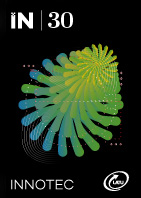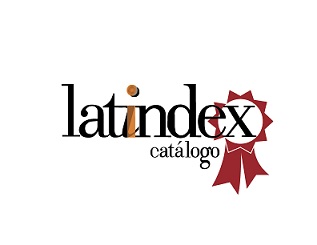The relationship between Mean Fibre Diameter measurements by Airflow and Laserscan for uruguayan wool
DOI:
https://doi.org/10.26461/30.02Keywords:
technological assessment, certification, IWTO, qualityAbstract
Uruguay is recognized for its production of high-quality wool, combining traditional practices with modern technology. Although wool production fell by 3.5 % last year, exports increased by 62.7 %. However, its competitiveness was limited by an International Wool Textile Organisation (IWTO) regulation that required the certification of Mean Fibre Diameter (MFD) using the Airflow method (AF, IWTO-28) (International Wool Textile Organisation, 2013), despite the fact that leading markets utilize the Laserscan (LSN, IWTO-12) (International Wool Textile Organisation, 2012). This study analysed 161 samples of commercial lots of Uruguayan wool (fineness ranging from 16 μm to 33 μm) to evaluate the equivalence between AF and LSN. A high statistical correlation was found, along with a lack of systematic and level-dependent bias when applying the IWTO-0 protocol (International Wool Textile Organization, 2020). This confirms that the Uruguayan wool matrix is compatible with both methods, allowing for their interchangeability within the limits of uncertainty. The evidence obtained supported a modification of the IWTO regulations. At the Lille Congress in 2025, an amendment was approved that exempts Uruguayan wool from the complementary AF measurement. This decision allows the country to certify MFD exclusively using LSN, which optimizes costs and aligns its standards with global markets, boosting the worldwide commercialization of wool.
Downloads
References
Abella, I. y Piegas, F., 2024. Situación y perspectivas de la cadena ovina. En: Uruguay. Ministerio de Ganadería, Agricultura y Pesca. Anuario OPYPA 2024: análisis sectorial y cadenas productivas [En línea]. Cap. 3. Montevideo: MGAP y OPYPA. [Consulta: 23 de enero de 2025]. Disponible en: https://descargas.mgap.gub.uy/OPYPA/Anuarios/Anuarioopypa2024/CP/3/CP3web/CP3-Cadenaovina.pdf.
Altman, D. G. y Bland, J. M., 1983. Measurement in medicine: the analysis of method comparison studies. En: The Statistician, 32(3), pp. 307–317.
Baxter, B. P., 1998. Comparison of Laserscan, OFDA and airflow on raw wool samples. En: IWTO. IWTO Raw Wool Group Conference, Nice, December 1998 [En línea]. Bruselas: IWTO. [Consulta: 01 de febrero de 2025]. Disponible en: https://www.researchgate.net/publication/269991416_Comparison_of_Laserscan_OFDA_and_airflow_on_raw_wool_samples.
Baxter, B. P., 1999. Influences on comparisons between the mean fibre diameter of wools measured by airflow and by projected image methods. En: Wool Technology and Sheep Breeding, 47(4), pp. 263–274.
Dawes, A. L.; Cranswick, P. M. y Knowles, D. G., 2018. The relationship between mean fibre diameter measurements by airflow and Laserscan for Falkland Islands wool. En: IWTO. 87th Annual Congress. Hong Kong, China, (14-16 de mayo de 2018). Bruselas: IWTO. (Submission No: RMG Sub 01)
Downes, J. G., 1992. The effect of the ellipticity of fibres on diameter measurement by the airflow method. En: Journal of the Textile Institute, 83(2), pp. 245–252.
Heath, W. A.; Barkhuizen, J. W. y Wright, O. E., 2006. The relationship between mean fibre diameter measurements by airflow and Laserscan for South African Wools. En: International Wool Textile Organization. IWTO Technology & Standards Committee, Raw Wool Group. Cairo Meeting, Report RWG 03. Bruselas: IWTO.
International Wool Textile Organization, 2006. IWTO-52: Conditioning procedures for testing textiles. Bruselas: IWTO.
International Wool Textile Organisation, 2012. IWTO-12: Measurement of the mean and distribution of fibre diameter using the Sirolan-Laserscan fibre diameter analyser. Brussels: IWTO.
International Wool Textile Organisation, 2013. IWTO-28: Determination by the airflow method of the mean fibre diameter of cores samples of raw wool. Brussels: IWTO.
International Wool Textile Organization, 2020. IWTO-0: Introduction to IWTO Specifications: procedures for the development, review, progression or relegation of IWTO Test Methods and Draft Test Methods. Bruselas: IWTO.
International Wool Textile Organization, 2023. IWTO core test regulations: IWTO core test regulations. Bruselas: IWTO.
International Wool Textile Organization, 2025. IWTO Congress 2025 [En línea]. Bruselas: IWTO. [Consulta: 26 de septiembre de 2025]. Disponible en: https://iwto.org/congress-2025/
Piegas, F., 2024. Diagnóstico y caracterización de la cadena ovina en Uruguay [En línea]. Montevideo: MGAP y OPYPA. [Consulta: 13 de enero de 2025]. Disponible en: https://descargas.mgap.gub.uy/OPYPA/Anuarios/Anuarioopypa2024/ESTUDIOS/13/E13web/E13-Diagnosticoycaracterizacion.pdf
Richards, N., 1954. The effect of oil and other changes on the results obtained by the airflow method for measuring wool fibre diameter. Bruselas: IWTO. (IWTO Technical Report).
Secretariado Uruguayo de la Lana, SUL, s.d. Secretariado Uruguayo de la Lana [En línea]. Montevideo: SUL. [Consulta: 12 de enero de 2025]. Disponible en: https://www.sul.org.uy/
Sommerville, P., 2007. Fundamental principles of fibre fineness measurement. Kensington: AWTA Ltd.
Uruguay. Ministerio de Ganadería, Agricultura y Pesca, 2023. Anuario Estadístico Agropecuario 2023 [En línea]. Montevideo: MGAP. [Consulta: 12 de enero de 2025]. Disponible en: https://descargas.mgap.gub.uy/DIEA/Anuarios/Anuario2023/ANUARIO2023WEB.pdf
Additional Files
Published
How to Cite
Issue
Section
License
Copyright (c) 2025 Karina Andrea Demaría Pérez, Santiago Nicolás Morales Yelpo, Pamela Stefani Ramos Olivera, Patricia Rafaela Zeballos Trinidad

This work is licensed under a Creative Commons Attribution-NonCommercial 4.0 International License.
Los autores del manuscrito declaran conocer y aceptar los siguientes términos de responsabilidad:
Haber participado lo suficiente en el trabajo como para hacer pública la responsabilidad por su contenido.
Que el manuscrito representa un trabajo original que no fue publicado ni está siendo considerado por otra revista para su publicación, en parte o en forma íntegra, tanto impresa como electrónica.
Que en caso de ser solicitado, procurará o cooperará en la obtención y suministro de datos sobre los cuales el manuscrito esté basado.
Declara que la información divulgada que pudiera pertenecer a un tercero cuenta con la autorización correspondiente.
Autorización para la publicación y compromiso de cita de primera publicación
Los autores/as conservan los derechos de autor y ceden a la revista INNOTEC / INNOTEC Gestión el derecho de la primera publicación, con el trabajo registrado con la licencia de atribución Creative Commons Reconocimiento-NoComercial 4.0 Internacional. Creative Commons, que permite a terceros utilizar lo publicado siempre que mencionen la autoría del trabajo y a la primera publicación en esta revista sin fines comerciales.
El autor se compromete a realizar la cita completa de la edición institucional de esta primer publicación en las siguientes publicaciones -completas o parciales- efectuadas en cualquier otro medio de divulgación, impreso o electrónico.
Los autores/as pueden realizar otros acuerdos contractuales no comerciales independientes y adicionales para la distribución no exclusiva de la versión del artículo publicado en esta revista (p. ej., incluirlo en un repositorio institucional o publicarlo en un libro) siempre que indiquen claramente que el trabajo se publicó por primera vez en esta revista.
Se permite a los autores/as publicar su trabajo en Internet (por ejemplo en páginas institucionales o personales) antes y durante el proceso de revisión, ya que puede conducir a intercambios productivos y a una mayor y más rápida difusión del trabajo publicado (vea The Effect of Open Access). A su vez los autores/as autorizan al LATU a publicar el trabajo en su repositorio digital.
Los conceptos y opiniones vertidos en los artículos son de responsabilidad de sus autores.
Este obra está bajo una licencia Reconocimiento-NoComercial 4.0 Internacional.












